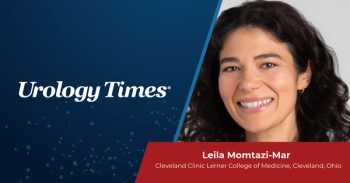
Dr. Nielsen on the value of the AUA Census for urology
“At the Advocacy Summit earlier this spring, 2 of the 3 leave-behind documents that outlined specific issues related to urology priorities were directly informed by information from the Census,” says Matthew Nielsen, MD, MS, FACS.
In this video, Matthew Nielsen, MD, MS, FACS, highlights the impact of the American Urological Association (AUA) Census, which was highlighted during a session at the
Video Transcript:
In my role as the chair of the Science and Quality Council, I am responsible for coordinating activities across the Data Committee, the Quality Improvement and Patient Safety Committee, and the Guidelines Committee. The Data Committee is really the part of AUA that shepherds the work of the Census and the AQUA registry. This is an exciting year, because it's 10 years for both. It's been exciting for us to reflect on all that we've learned from both the Census and AQUA, the ways that it has informed a lot of our advocacy efforts, the ways that it's informed our understanding of quality in urology and spaces that we can turn our attention to, the ways that it has helped our urologists understand where the work force is and where the work force is going, where some future challenges might be, and understand how their practice is.
The work force issues in particular are things that we've learned about in the Census. We've learned about the prevalence of burnout in urology and factors that are associated with that. We've learned about ways that the work force is changing. We're really proud and excited that more women are coming to join the field, and we've been excited to see those numbers pick up over time. We were concerned to see that particularly after COVID, the rates of burnout were actually higher in women than in men, whereas prior to the pandemic, the earlier effort of evaluating burnout was less of a difference between the 2. So, it helped us identify a space that we wanted to do more research and understanding about.
Other things that we've learned through the Census are ways that the work force is changing, and factors that are affecting people's day to day lives in terms of the ways that they are managing patients [and] the specific administrative burdens that need more attention. And a lot of those activities are useful for us to help pivot over to the policy and advocacy side of the AUA to bring issues to our legislative leaders on Capitol Hill. At the Advocacy Summit earlier this spring, 2 of the 3 leave-behind documents that outlined specific issues related to urology priorities were directly informed by information from the Census. We're really proud of the Census as the most comprehensive view we have of the current urology work force, the issues that are on the minds of urologists, and things that we need to have our policymaker colleagues understand to help preserve access to urology care and quality urology care for the generations to come.
This transcription has been edited for clarity.
Newsletter
Stay current with the latest urology news and practice-changing insights — sign up now for the essential updates every urologist needs.


















